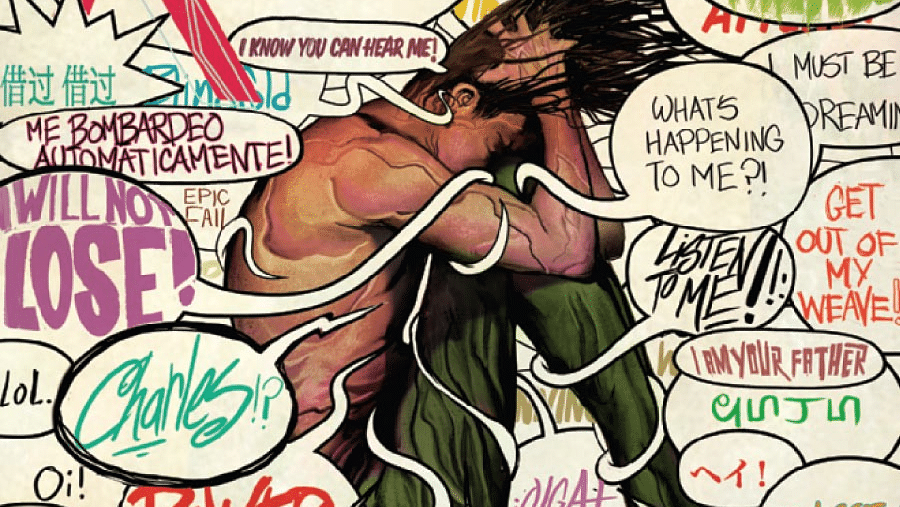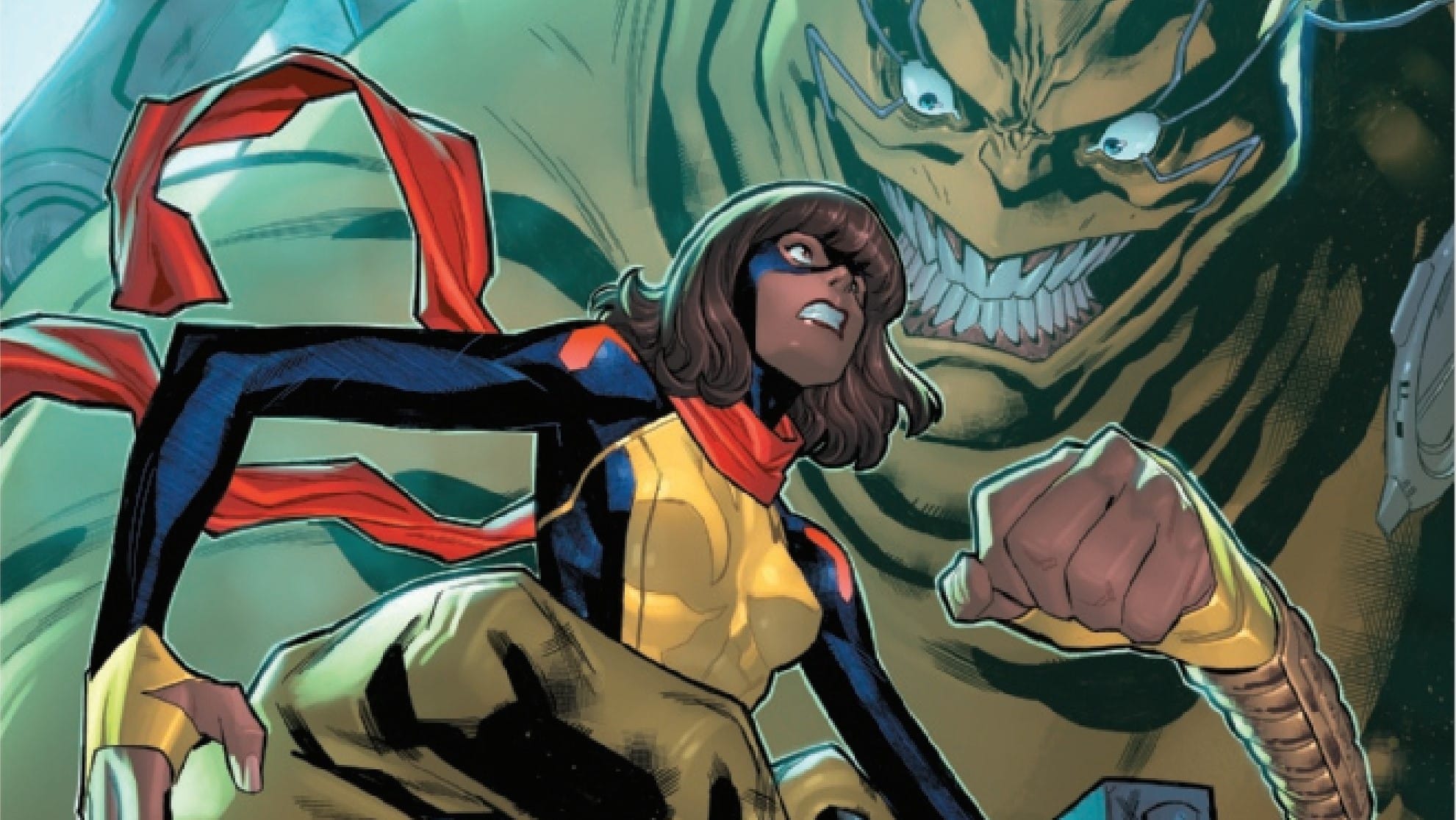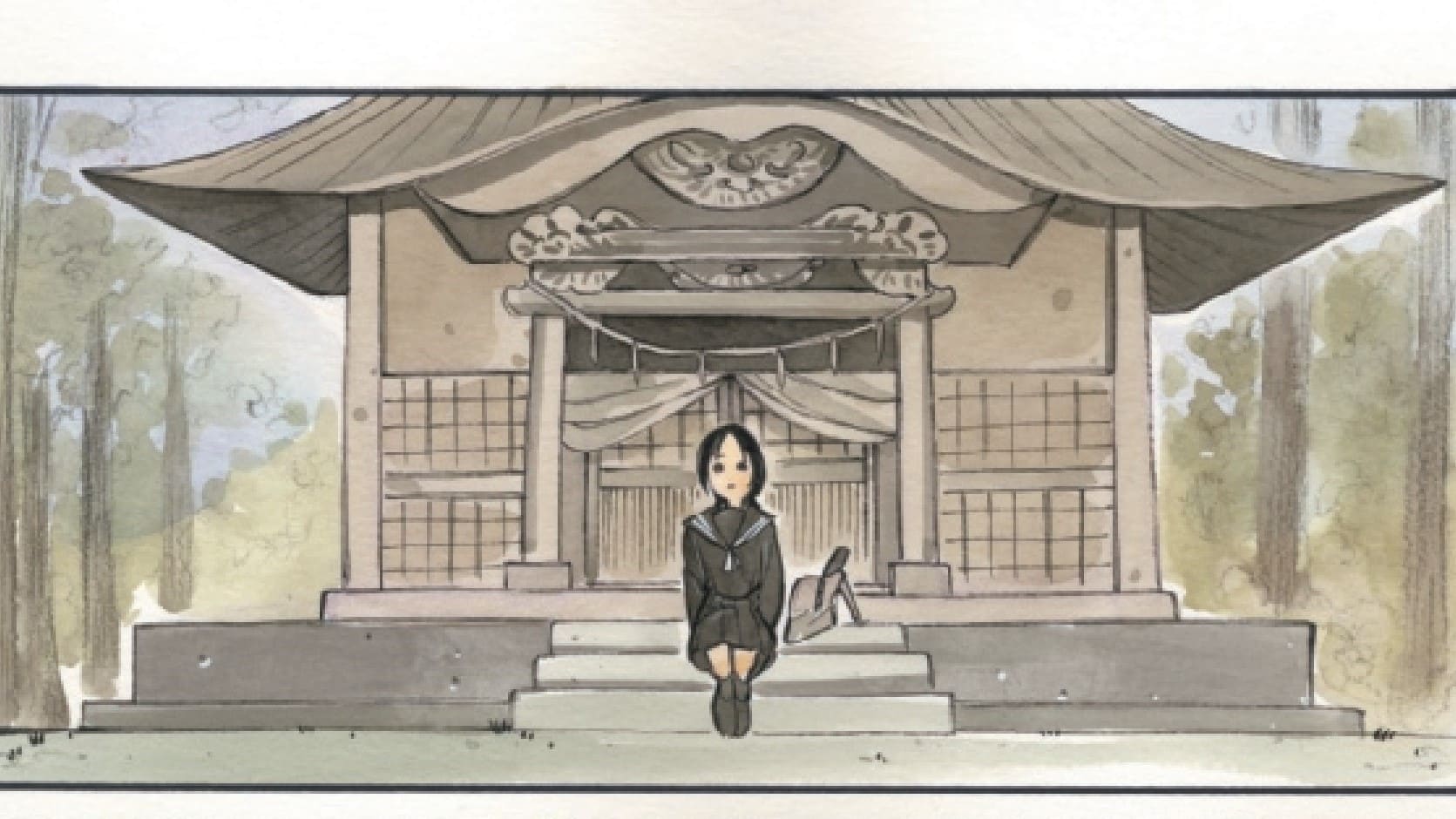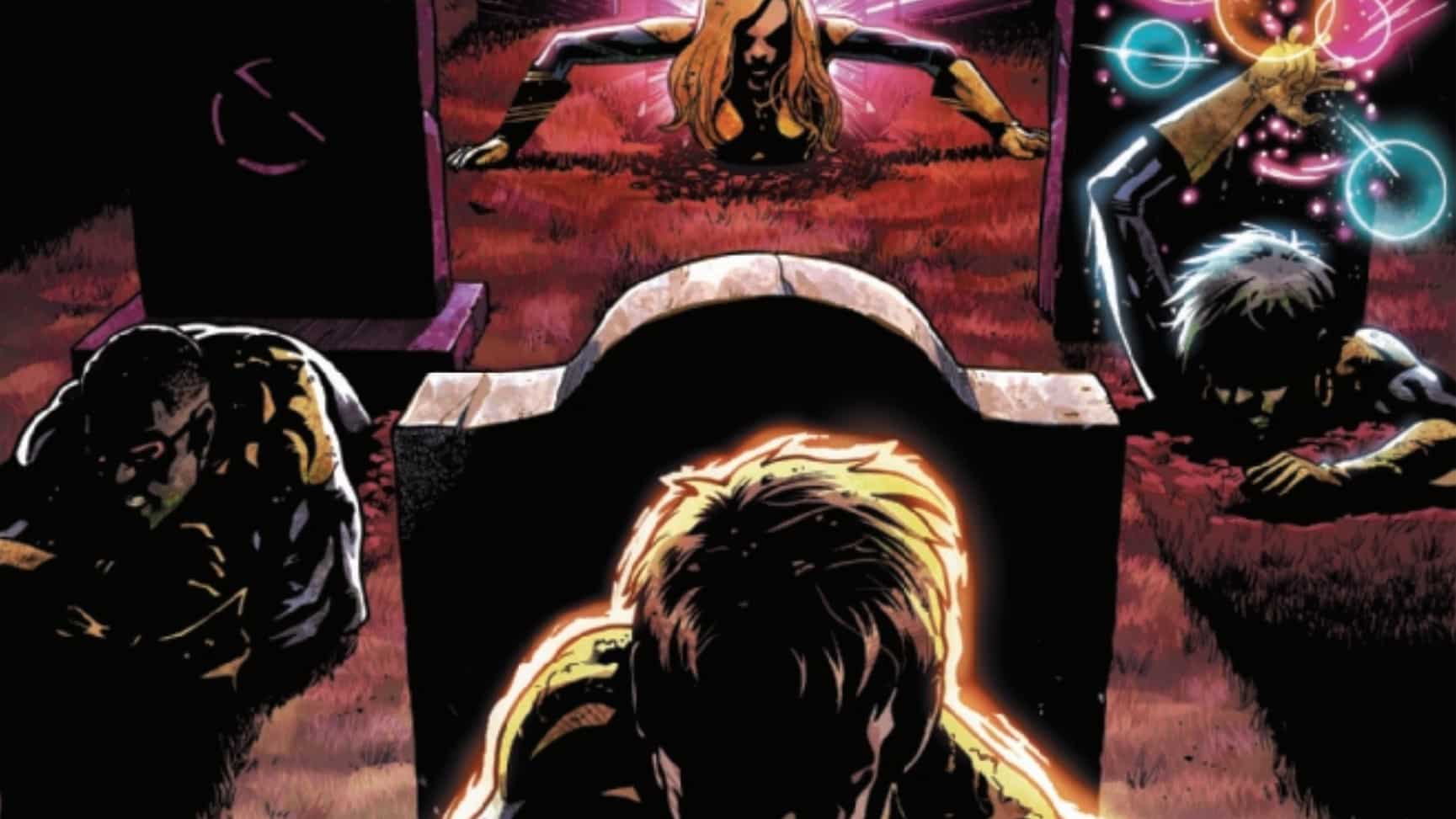Mutants have history. Ridiculous amounts of history. Despite the friendly, reassuring #1s emblazoned on these new X-Comics we’re getting, don’t be fooled — that history’s going to be coming up again, and again, and again. While every writer tries to be as welcoming to new readers as possible, there’s only so much they can do to explain the context of everything that’s come before. There’s a lot of reading that needs to be done if you want to get the full story, but don’t worry, faithful readers, I’ve got you covered. I’ve done the reading so that you don’t have to. Let’s dive in, and take a look at everything you need to know about what’s led up to Legion of X.
The Legacy of Legion
The Krakoan lead-up to Legion of X is relatively short — five issues of Way of X and one The Onslaught Revelation special — but given this book’s apparent focus on Legion (it’s right there in the title!), I figured it’s worth looking at Si Spurrier’s and Tan Eng Huat’s run on X-Men Legacy, which did a lot to inform the character we’re seeing today. It’s also worth looking at the kinds of things Spurrier brought up in his run. Legion’s long believed the X-Men need to shake up their ways, and find a new path…and now, it appears they may have.
All that comes later. For now, let’s set the scene. It’s 2012. The Avengers and the X-Men have just fought each other over the Phoenix, one of the biggest consequences of which was the death of Professor X at the hands of his Phoenix-possessed students, Cyclops. From the ashes of that event came a whole slew of new beginnings. New #1s all around, for both the Avengers and the X-men — and, not to be forgotten, the X-Men adjacent.
X-Men Legacy was renumbered and handed over to Si Spurrier and Tan Eng Huat. It stars David Haller, the son of Charles Xavier, known to most as “Legion.” David suffers from Dissociative Identity Disorder — he has several hundred different personalities in his head, and each identity comes with its own unique superpower, ranging from the mundane to the godlike. The only limit to Legion’s power is the extent of his control over his many selves.
“I rule me.” Remember that phrase. It comes up a lot.
At the start of this series, David more or less has his many selves and abilities under control. He has built a prison in his mind, each cell of which contains a separate personality, one he extracts powers from when he needs to. Charles Xavier has been working with David to get these powers under control but has left David with a community of psychics who are helping him train. When Charles Xavier is killed, however, the psychic shock of that event is felt around the world — and it breaks down David’s barriers of control entirely. The personalities in his head all battle to possess Legion’s body, and David is forced back to square one in terms of getting his selves back under control.
There are a few elements of this run that I believe are worth taking a look at — some, because they’ve already been brought up in Way of X, and some because I simply believe they will very likely be brought up in Legion of X and feel you might need important context.
Golden Goblin of Hate

One of the series’ biggest foes is a strange, golden demon personality that took on the form of Professor X. There was a lot of mystery surrounding what this persona was exactly — a result of David’s trauma from his dad dying? An invasive spirit? David’s son in psychic spirit? Something else entirely? David chose not to find out, ultimately, but it’s possible that this entity may be revisited.
The reason why is the gold fiend’s MO — it sought to free itself from David, and once it did, infiltrated the astral plane and filled everyone in the world with hatred, slowly increasing levels of hatred throughout the world in an attempt to see the human race eradicate itself. This master plan was notably used by another important X-enemy; Onslaught, someone who shows up in Way of X and, notably, also originated as a dark little psychic goblin born of the trauma of a mind being ripped apart (and for a closer look at that, Jay & Miles got you covered).

Blindfold

On the other hand, you have David’s romantic interest, Ruth Aldine — Blindfold. Born without eyes, Blindfold’s mutant gift is the ability to see the future. Most significantly, the future where David’s powers go out of control, and he nearly absorbs every mutant in existence before killing them all — and Blindfold is fated to either stop him or doom all of mutantkind. A whole new category of star-crossed lovers, here.
While David’s age is unclear, Blindfold is definitely a teenager, and this romance leaves you with an uncomfortable hope that David’s a year or two older than her at most. But beyond that, it’s an oddly rushed one – but when one person is psychic, and the other can see the future, it’s not entirely surprising for a romance to move quicker than usual.
This series also introduces Blindfold’s ultra-racist, mutant-hating brother, Luca, another one of the series’ antagonists. We find out that Luca attempted to murder his sister for her mutation but accidentally killed their mother. Luca’s execution unleashed Luca’s latent mutant abilities, however, and as his soul escaped his body, he stole half of Ruth’s mutant powers, gaining the ability to peer through all possible timelines and manipulate them to his will. He’s the one who pushes David to become the monster who destroys mutantkind — though he’s eventually taken over by the gold Xavier goblin, who uses Luca’s powers to begin his campaign of hate.
As for Ruth, she comes into her own as her romance with David develops. She helps him get a better hold of herself, as the two fall in love. She also grows in both power and confidence. It had been hinted in previous issues that Ruth was a descendant of one of the most significant mutant precogs – Destiny. In fact, in her final battle against David, Blindfold takes on a Destiny-like appearance in battle.
Ruth took her own life just before the Krakoan era began, having foreseen something truly terrible. Because of Krakoa’s ban on those who could see the future, Ruth has yet to be seen in the Krakoan era — but with the original Destiny’s return, we may see that ban lifted. Ruth herself has been seen in promos for Legion of X, all but confirming her return.

Bloody Superheroes
David has a very derisive attitude towards traditional superheroism. Once he gets some semblance of control of himself, David sets his ambitions higher. It’s X-Men Legacy after all, and as far as David’s concerned, what he’s inherited from his father is Xavier’s dream — and he believes his father has been going about things the wrong way.
It’s superheroics that David specifically has a problem with. That, and the reactive nature of it. David wants to be proactive. Use his absurdly vast array of powers to stop dangers before they happen, no matter how many ethical shortcuts he has to take for the greater good — not seeing the irony of just how much that truly makes him his father’s son.

Throughout the series, we see David attempting to fix the world his way, stopping threats before they happen (something Spurrier also explores in his X-Force run), and being psychic certainly helps. One thing that keeps happening, though, is that his approach is to use other people to achieve his goals. David pushes away many would-be allies in favor of manipulating them, something that pisses people off a lot more than his supervillainy ever did. He even uses Blindfold, who is the only one who tries to see the best in him despite his actions.
It’s clear that his approach to people, and community, is a lot like his approach to his alternate personalities — if he could lock everyone up in a cell, and bring them out only when they’re needed, he’d do so to achieve his version of the Dream.
We Are Legion — I Am Gestalt

David’s journey is a long and winding path with one inevitable end — him turning into a monster that almost destroys mutantkind. Before he reaches there, he does finally learn his lesson: people are not things to be controlled. Even his own personalities, which David begins to finally accept as disparate parts of himself. Forced by a fake Phoenix (long story) to truly draw upon his powers, David begins absorbing his personalities into himself instead of simply using them.
Thus empowered, he is finally able to defeat the golden Xavier goblin — but as the goblin puts forth, there’s no true eradication of a mental illness. You just learn to live with one. The goblin’s essence merges with David, triggering David’s uncontrolled transformation into the creature meant to absorb then destroy all of mutantkind.
It’s here that the tragedy of the series comes to a head. David finally accepts himself and pulls in the last of his more powerful personas — and in doing so, gains the power to erase himself from reality entirely, as if he’d never been born. It’s a powerfully bittersweet ending — David takes control of his story the only way he knows how. “I rule me” unto the end.
Comics being what they are, of course, David later showed up in the lead-up to the Age of X-Man storyline and was resurrected in Way of X. No explanation for how he returned to existence has been given, and given that it was Spurrier who wrote him out of existence, there’s no better writer to give us that explanation in Legion of X — though so far, that’s not really been touched on.
A Certain Fascination with Stereotypes
Something that’s hard to avoid while reading through this is a certain fascination with labels and the stereotypes that come with them. Let’s put aside the uncomfortably inventive and not-technically-banned collection of racist phrases that Luca Aldine kept coming up with, early in the run – largely because I don’t want to bring any of them up here. We get it, Luca’s racist, we don’t need really need Luca’s reductive and offensive terms to understand that point.
Let’s look at this page, here, that follows Pete Wisdom following Legion into a bar, saying “An Englishman, a Scotsman ‘n an Irishman walk into a bar…”

Largely white UK folk are a lot safer to make fun of when you’re a white writer — as the Japanese-appearing Betsy Braddock is quick to remind us with a “Do a funny about me, Peter — I dare you.” You get the sense, though, that Spurrier would enjoy playing off labels and jokes for other folks if he could get away with it. I mean, there’s not a lot that’s played with here, but it is a panel that does show off one thing: Spurrier is fascinated with labels, and time and time again, you will see characters he writes reduced by those labels.
That’s not to say there’s no nuance in his writing, or that there’s no respect paid to non-white characters. What it does mean, however, is that you will often see characters written from a very reductive point of view — especially if it’s to make another character look forward-thinking, if it’s to make someone seem like they’re challenging the status quo. It’s easy to make someone look like they’re thinking out of the box when you draw attention to what the box looks like.
All this to say, you’re going to see your favorite X-Men acting seemingly out of character, all because Spurrier took the wrong label to focus on and ran with it. Spurrier’s characters can often feel like concentrated parodies of themselves, and some facets get squeezed right out. Which goes a long way toward explaining the warped take on Nightcrawler we see when we get to Way of X.
We’re Halfway There
Let’s fast forward past David Haller’s tragic X-Men Legacy end to the brand new Krakoan age. Jonathan Hickman helmed a major relaunch to the status quo of the X-Men. Mutants, having had enough of their constant persecution, have nearly all moved to the living island known as Krakoa. They’ve bribed the world with extremely effective medicinal flowers to recognize Krakoa as its own nation, for all the protections that come with that. Mutants are living in the paradise that is Krakoa, but the biggest change of all?
They solved death.
The combination of five unique mutant powers, added with a psychic backup of every mutant’s memories and personality and genetic registry, means that any mutant who dies can be instantly resurrected. It’s a secret they keep from the world, but the fact that mutants no longer need to be afraid of death has implications that have only begun to be explored.
In fact, there’s a lot about Krakoa that’s only begun to be explored. Mutantkind doesn’t just have a new nation — they’re building an entirely new culture, from the ground up. They have a new language, new customs, new rituals, unlike anything that’s ever been seen before.
In X-Men #7, we learn about the Crucible. Long story short, years earlier, the Scarlet Witch lost her mind and depowered nearly all of Earth’s mutants. In the Crucible, mutants “earn” the right to die and come back with their powers returned to them — mutants have to prove they truly want it. It’s a violent ritual for a post-death society, and it’s something that seems to disturb Kurt greatly, leading him to the one thought that would lead to Way of X’s creation:
“I think I need to start a mutant religion.”
Krakoa has also grown a building that seems to have been built specifically for Kurt — a large tower with no possible entrances aside from teleportation. It’s a mystery, and one Kurt uses to make a little shrine for himself to practice his Catholicism, but aside from that, it’s not really been seen again.

We’re Livin’ On A Prayer
My colleagues Anna Peppard and Jude Jones have already done great coverage of the Way of X books for both the series highs and lows (for an especially low point, you might want to click on through for their coverage of Way of X #3) — I’m just going to be covering the highlights.
One important word to keep in mind is “anomie” — the idea that a society without limits eventually reaches a point of derangement and an absolute lack of moral values. Anomie is put forward as the threat mutantkind faces now that they’re on an island that’s eliminated death, scarcity, and whose only sacred three laws are honestly pretty lax and open to interpretation.
Doctor Nemesis — Krakoa’s one of Krakoa’s many mad superscientists, but most significantly, the one who invented Krakoa’s healing slowers — has a lot of sociological theories he throws at Kurt now that everyone knows that Kurt’s starting a new religion. Nemesis believes that mutant society is in desperate need of something like what Kurt is proposing, or risk either complete societal collapse or a society that’s defined by the strongest amongst them. Nemesis has already noted that the latter is taking effect: while every mutant who dies is up for resurrection, priority is given to mutants who die in battle — the soldiers, or the shadow-ops of X-Force, or those who die in the Crucible — meaning that as it stands, mutant society is skewing towards those with a more warrior-like disposition.

On top of that, we discover that the anti-mutant organization Orchis has unleashed a psychic virus of sorts on the Krakoan population — the psychic son of Charles Xavier and Erik Lensherr’s worst impulses, the being known as Onslaught.
Orchis stole both the Onslaught entity and David Haller’s brain – though it’s not explained how they procured either – and used David’s brain to run mental simulations on how Onslaught affects societies. A creature that spreads hatred, Onslaught feeds on the memories lost between a mutant’s regularly scheduled psychic back-ups and their resurrection to grow and infect their minds. In short, everyone that dies comes back with a little Onslaught goblin in their minds that wishes to do nothing but spread hate, hastening societal collapse.
Kurt kills the Legion brain, allowing for Legion to be resurrected – despite Professor X’s wishes – which allows Legion to begin his investigation into Onslaught’s invasion properly. David is still very aware of the threat he poses, though, and has twin mutants Zorn and Xorn follow him around, to kill David if he ever loses control.
In the meantime, Nightcrawler begins exploring various aspects of mutant society, and the ways they’re interacting with Krakoa’s three laws, finding that “Make More Mutants” is a lot more complicated than the traditional Catholic marriage-then-babies route. Pheromone controlling mutant Stacy X introduces him to the Bower — a place where people can be freely intimate with each other, and also a place that raises the many new mutant children that the island’s open intimacy sometimes leads to.

He also finds himself caught between mutant supremacist Fabian Cortez and newly repowered mutant Lost, whose family was killed in one of Fabian Cortez’s previous attacks — and Nightcrawler sets it upon himself to bring peace between the two, to find a way past the hatred and towards something new.
“Something new” is a recurring theme in this series. People are being given seemingly limited options, but finding a new way by taking the kind of risk no one’s ever tried before. It’s that which is the basis for Nightcrawler’s new way of life: The Spark.
Onslaught vs. The Spark
Eventually, Onslaught manages to infect enough minds to lead them all towards a night of ultimate decadence — something called the Cruciball, an evening meant to end in the deaths of all who attend. It’s meant to be a perverse celebration of life, given that everyone there can just be resurrected, but unbeknownst to all attending, Onslaught has convinced Professor X to delete the backups of every living mutant, one by one. Everyone who dies at the Cruciball will die permanently.
It takes the efforts of both Legion and Nightcrawler to combat Onslaught’s attack. First, Legion takes one of Krakoa’s signature gateway flowers, and plants it inside his mind. In doing so, he creates a place known as the Altar — a section of the Astral plane where all mutants can simply walk into and commune.

It is in this place that Nightcrawler more or less forces a final reconciliation between Lost and Fabian Cortez. With his first sermon of his new way, Kurt talks about the Spark — the drive to do something new. With death and scarcity all but eliminated, mutants have an unprecedented opportunity to take otherwise foolish risks. Anomie can be staved off by a willingness to push past boundaries and try something new, and in the malleable reality of the Altar, both Lost and Fabian Cortez take that kind of risk. Cortez, for the first, finally admits to his shortcomings and the wrongs he’s done, and while Lost does not forgive him, she at least puts her hate aside…and in doing so, activates the Spark.
The people of the Cruciball are then led via gateways into the Altar. From that point, the Spark is spread via Sooraya Qadir – aka, Dust – whose powers don’t just allow her to turn into sand, but connect her consciousness to every particle she touches. She is able to take Lost’s Spark and spread it through every mind connected in the Altar, and that spread of anti-hate is exactly the thing that defeats Onslaught, once and for all.
Or, well, until the next time someone wants to use the character.
In the aftermath, we see Lost and Fabian Cortez being amongst the first of the Spark’s new acolytes. Kurt may not have founded a new religion, but he has found a new way of life, and he and Legion dedicate themselves to protecting that way of life. They’re not quite priests, they’re not quite cops, they are not quite well defined at all, but they do lean into a bit of wordplay calling themselves…Legionaries.
Meet the Team: Legion of X
We know very little about Legion of X, beyond it being a direct continuation of Way of X. The tease at the end of The Onslaught Revelation simply said, “We keep the peace. We keep the law. We keep the Spark,” which certainly sounds like a team of cops, and in an interview with Si Spurrier, that seems to be confirmed…kind of.
“When people ask me what Way of X was about I said, ‘It’s about religion on Krakoa except it’s not about religion at all.’ With Legion, the answer is, ‘Yes, it’s about policing, but it’s not about policing at all.’”
It is worth keeping this quote in mind, as we get into an X-series about policing, from Way of X #4: “A bad law is merely a rule. A good law has the flexibility to accommodate the human heart.”
While it’s been said that this series has a rotating cast, Spurrier has said that there will be a core team of characters, who include Legion Nightcrawler, Pixie, Doctor Nemesis, the Juggernaut, and Forget Me Not.
We’ve talked extensively about Legion, and briefly about Nightcrawler and Doctor Nemesis. As for the others…
Pixie
Megan Gwynn is a pink-winged girl hailing from Wales, with the mutant power to fly, and breathe out a hallucinogenic powder she calls Pixie Dust. After a run-in with a demonic version of Magik, a part of her soul was corrupted and manifested into a soul dagger, which Pixie can summon at will. The encounter unlocked Megan’s magical aptitude, giving her a few other abilities, the most prominent of which allows her to teleport distances that put even Nightcrawler to shame.
Juggernaut
Professor X’s half-brother Cain Marko gained his powers from the gem of Cyttorak, a conduit connected to a god of destruction. Cain is not actually a mutant, and would be one of the very few non-mutants on Krakoa. Cain has great strength, a degree of invulnerability, and an immunity to psychic intrusion, but his signature ability is to channel his destructiveness into unstoppable forward movement.
Over the years, Cain has gone back and forth a lot over the hero-villain line, but seems to have settled more squarely on the side of the heroic in his most recent appearances.
Forget-Me-Not
Despite his name, people tend to forget this mutant quite a lot, but that’s not entirely their fault. Forget-Me-Not’s mutant power is that people forget he exists the moment they look away from him. He has actually been a pivotal part of the X-Men for many years, but everyone keeps forgetting he was there. I constantly worry that if he dies, he may never be resurrected because no one remembers to do it.
Hopefully, this covers everything you need to know before going into the series, but the continuity of the X-Men is deep, complicated, and messier than any continuity frankly has any right to be.
Legion of X #1 releases May 24, wherever Marvel Comics are sold.






